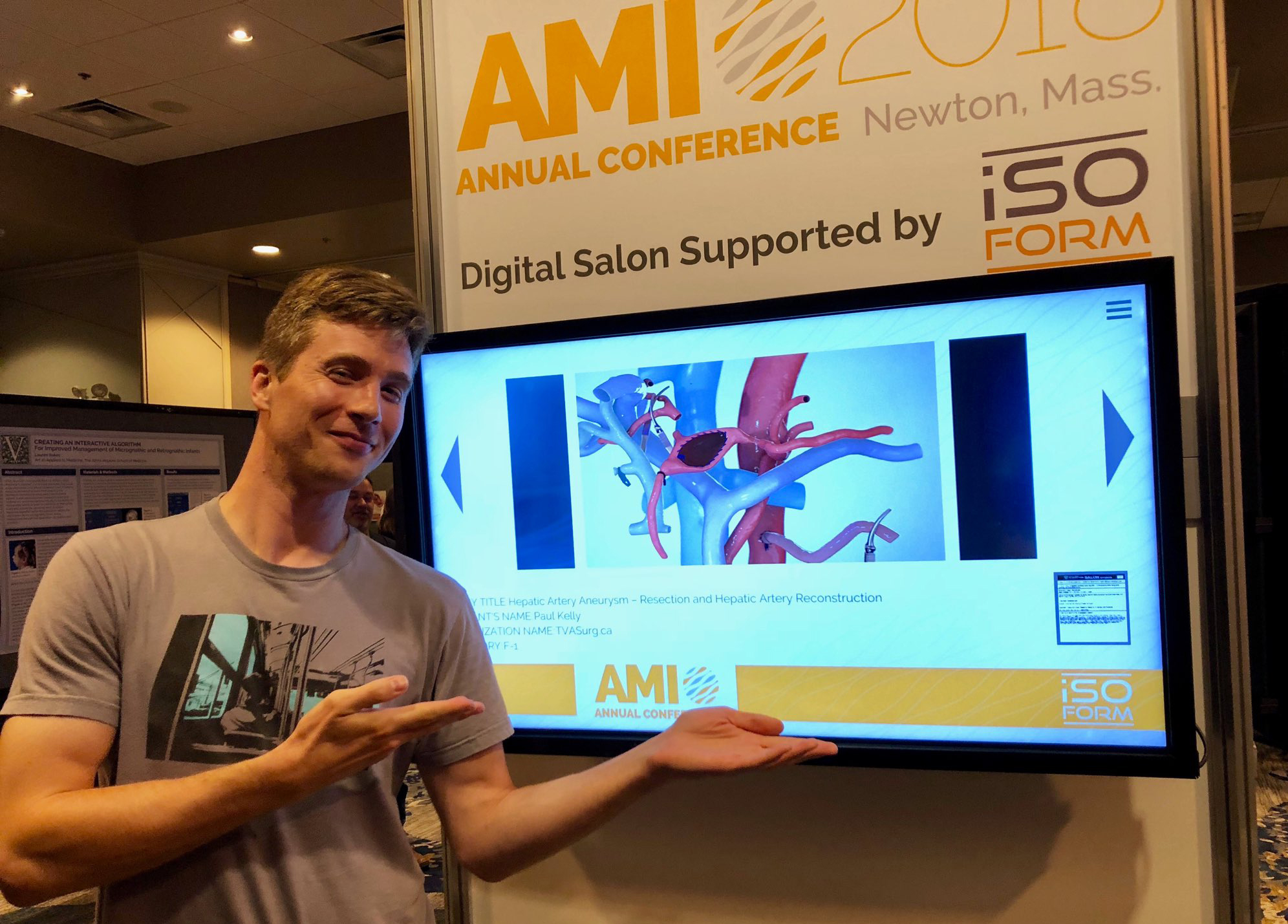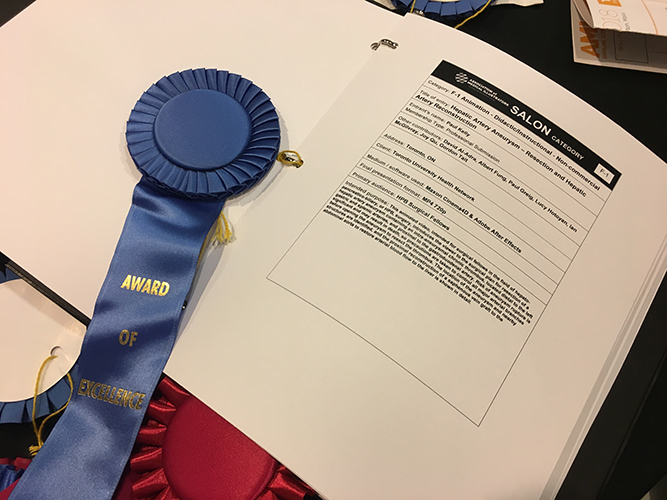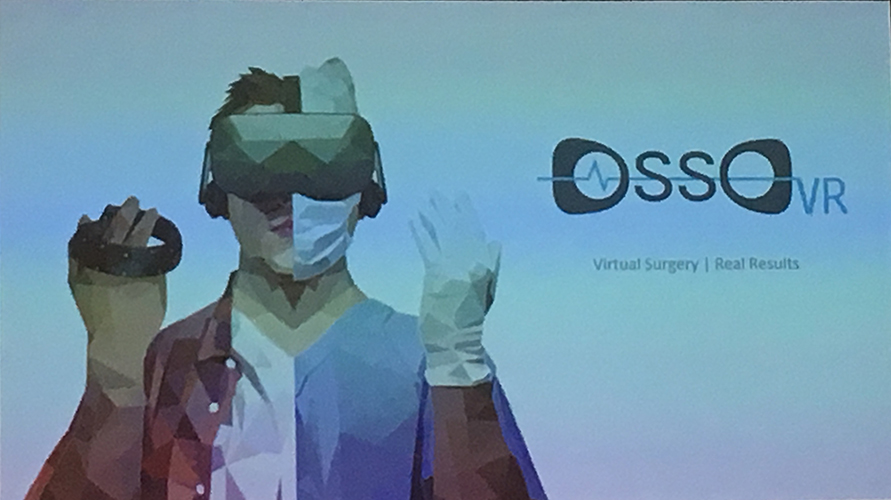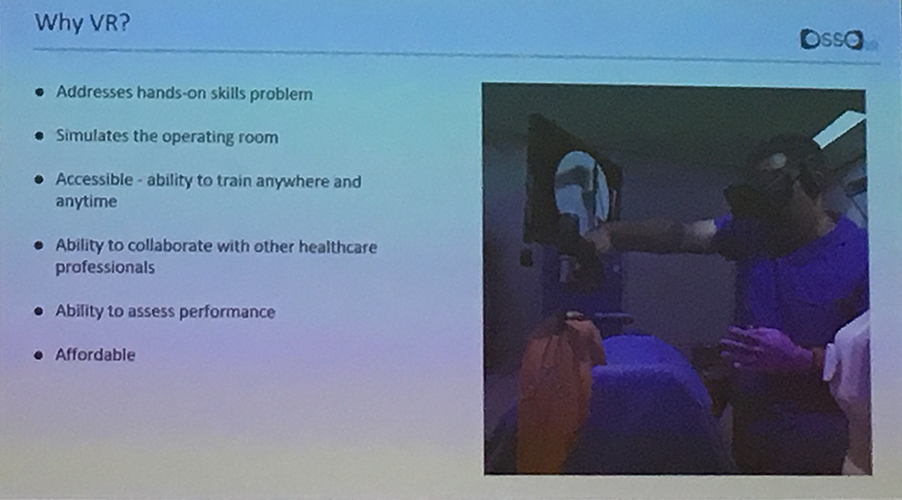
Attending the annual conference is always a great opportunity to catch up with medical illustrators working in Toronto, including those from Artery Studios, INVIVO Communications Inc, and AXS Studio, as well as medical illustrators working in other cities such as legends in the field Ian Suk, professor at Johns Hopkins, and Bill Andrews, director of the Augusta University medical illustration program.
Always impressive is the work displayed in the AMI Salon gallery, which includes student and professional work in medical and scientific illustration, animation and interactive media. TVASurg took home yet another award, our Hepatic Artery Aneurysm Resection and Reconstruction was selected for an Award of Excellence in the Professional Non-commercial Animation category. It is always a humbling experience to see our work alongside so much talent in the field, and we are grateful for the experience of being able to share the spotlight.


The first talk of the conference focused on the past, present and future of clinical trials by Jeffrey Drazen, MD, editor-in-chief of the New England Journal of Medicine. The conference is a great place to learn about cutting edge research and innovations such as the “Organ-on-a-Chip” technology presented by Dr. Lian Leng, PhD of Emulate, Inc. and the ever-evolving Molecular Maya toolkit by Dr. Gaël McGill.
Presentations featuring surgical topics are never in short supply at AMI meetings, and this year we saw Johns Hopkins graduate Hillary Wilson present her research and illustration work on gender affirming surgery, Dr. Gili Naveh, DMD, PhD discussed new structural features of the periodontal ligament, and Dr. Jennifer Luz, MD, RMSK, MPTC demonstrated illustration techniques based on musculoskeletal ultrasound. Being able to learn about the science of visualizing and communicating complex surgical concepts is a great benefit to attending the AMI conference!


VR was a hot topic this year, and Adriana Orland from Osso VR presented on developing VR modules for surgical training, making a great case for the importance and value of this emerging technology. Surgeons need to learn a large number of procedures to become competent in their craft, and with so much of their time devoted to reviewing medical imaging and with work hour restrictions in place reducing first-hand opportunities in the OR, there is a growing need for advanced surgical simulation training that VR can provide. For those eager to dive in and experience VR firsthand, Health Scholars’ Fire in the OR demo in the Salon was a big hit!
We'd again like to extend our thanks and congratulations to the AMI planning committee for a wonderful and successful conference, and we definitely look forward to seeing everyone next year in Milwaukee, Wisconsin!
